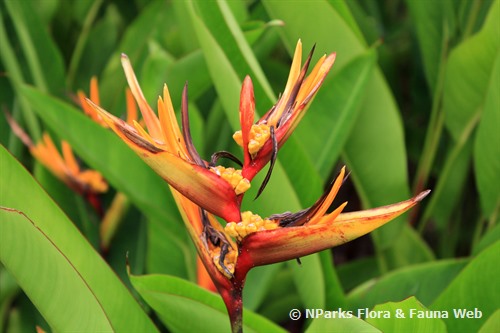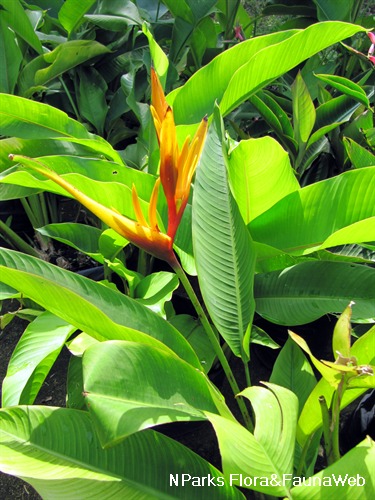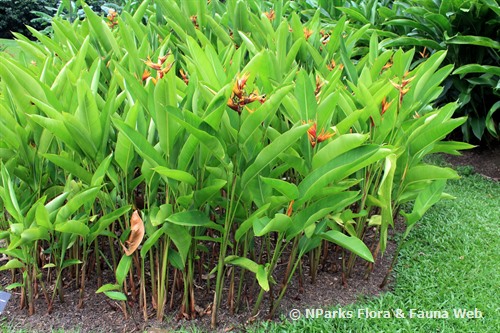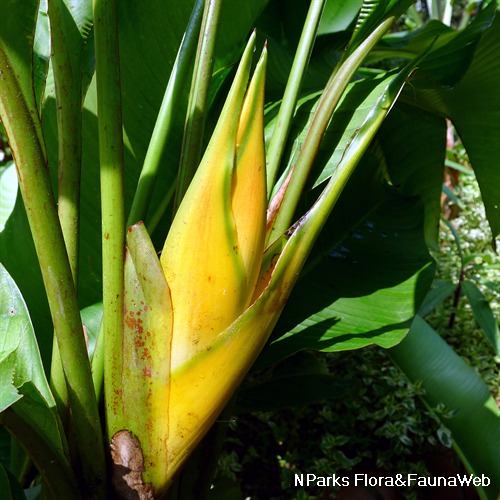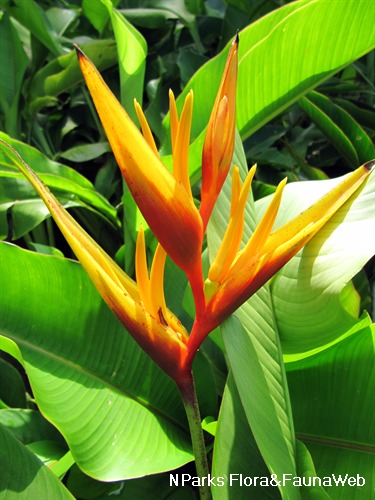
Name
Classifications and Characteristics
| Plant Division | Angiosperms (Flowering Seed Plants) (Monocotyledon) |
|---|---|
| Plant Growth Form | Herbaceous Plant |
| Lifespan (in Singapore) | Perennial |
| Mode of Nutrition | Autotrophic |
| Maximum Height | 1 m to 1.5 m |
Biogeography
| Native Distribution | Of horticultural origin |
|---|---|
| Native Habitat | Terrestrial |
Description and Ethnobotany
| Flowers | The flowers have 5 to 7 yellow bracts with a maroon or dark red base, often with red spots and blotches towards the tips. |
|---|
Landscaping Features
| Desirable Plant Features | Ornamental Flowers, Ornamental Foliage |
|---|---|
| Landscape Uses | General, Parks & Gardens, Container Planting |
Fauna, Pollination and Dispersal
| Fauna Pollination Dispersal Associated Fauna | Bird-Attracting |
|---|
Plant Care and Propagation
| Light Preference | Full Sun, Semi-Shade |
|---|---|
| Water Preference | Moderate Water |
| Rootzone Tolerance | Moist Soils, Well-Drained Soils, Fertile Loamy Soils |
| Planting Remarks | The rhizome should be planted with the top(new shoot/bud) no more than 3-4cm under the soil. New shoots or bus should be above the soil. After planting, water thoroughly, do not water again until soil is getting dry. A slow release fertilizer is ideal in the beginning. |
| Pruning | Each pseudo-stem will only flower once, so after flowering it is best to cut that pseudo-stem out. |
| Propagation Method | Seed, Storage Organ (Rhizome), Division |
Foliar
| Foliage Retention | Evergreen |
|---|---|
| Mature Foliage Colour(s) | Green |
| Mature Foliage Texture(s) | Smooth, Raised / Sunken Veins |
| Foliar Type | Simple / Unifoliate |
Floral (Angiosperm)
| Flower Colour(s) | Orange, Red |
|---|---|
| Flower Grouping | Cluster / Inflorescence |
| Flower Location | Terminal |
| Flowering Period | Free-Flowering |
Image Repository
Others
| Master ID | 29969 |
|---|---|
| Species ID | 4278 |
| Flora Disclaimer | The information in this website has been compiled from reliable sources, such as reference works on medicinal plants. It is not a substitute for medical advice or treatment and NParks does not purport to provide any medical advice. Readers should always consult his/her physician before using or consuming a plant for medicinal purposes. |

